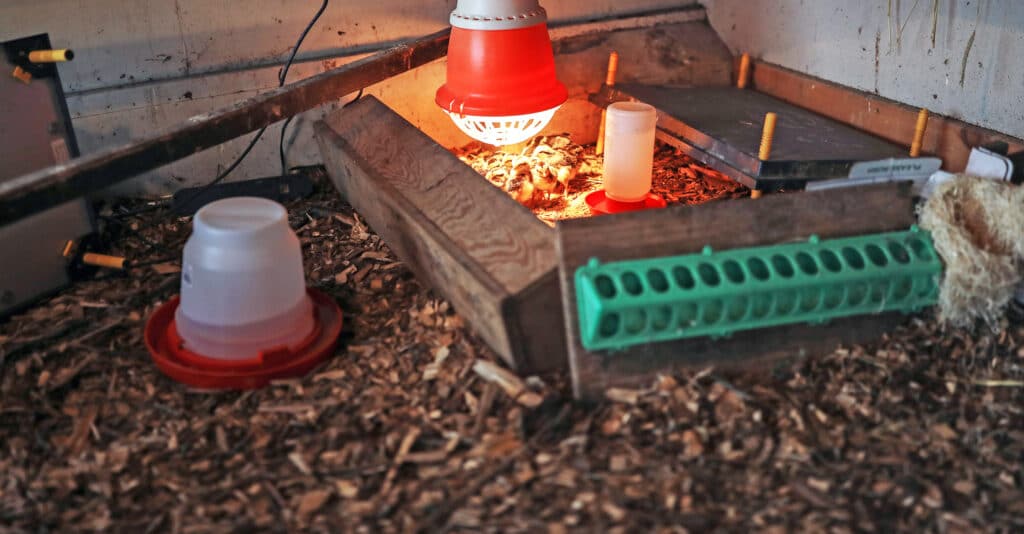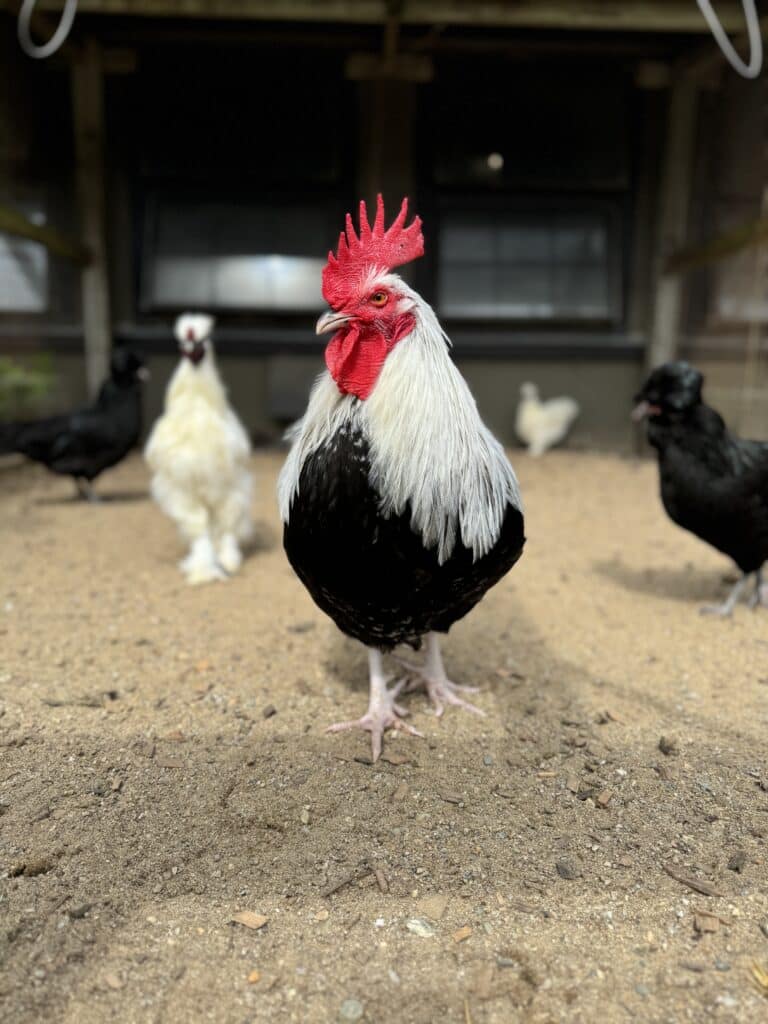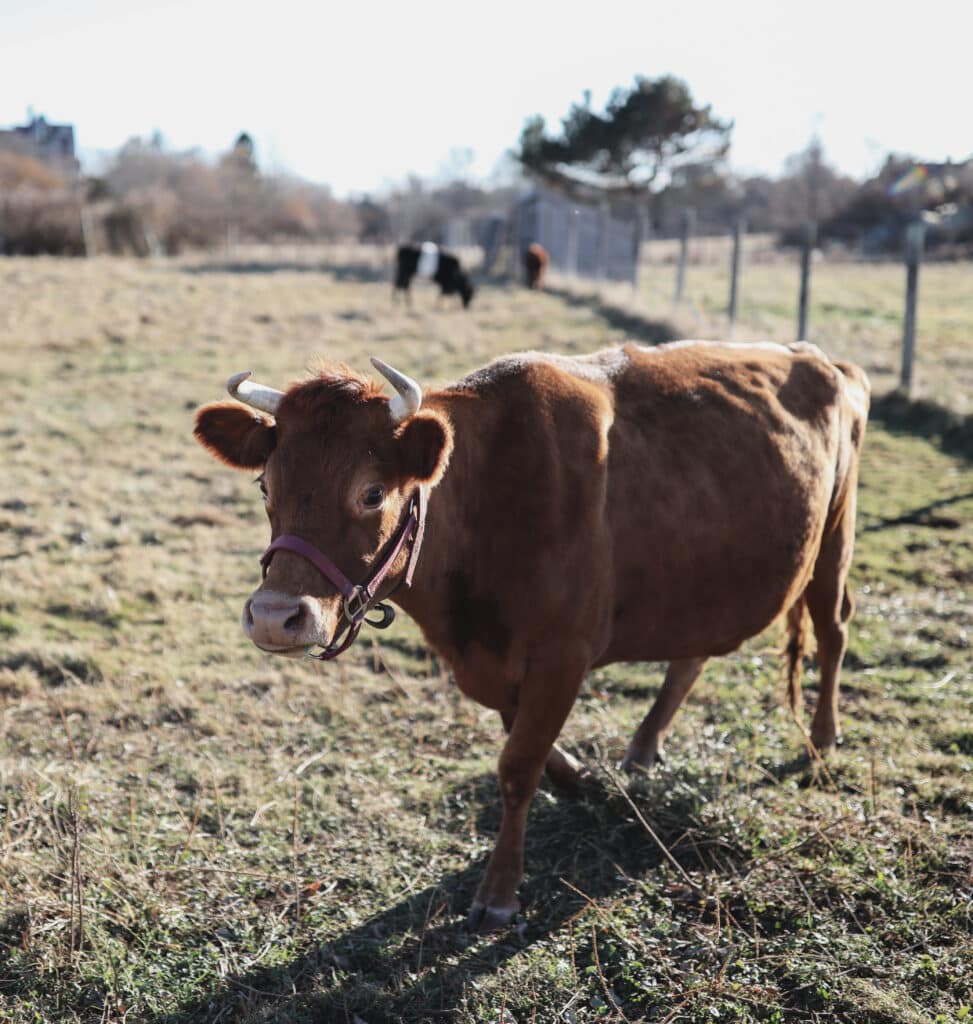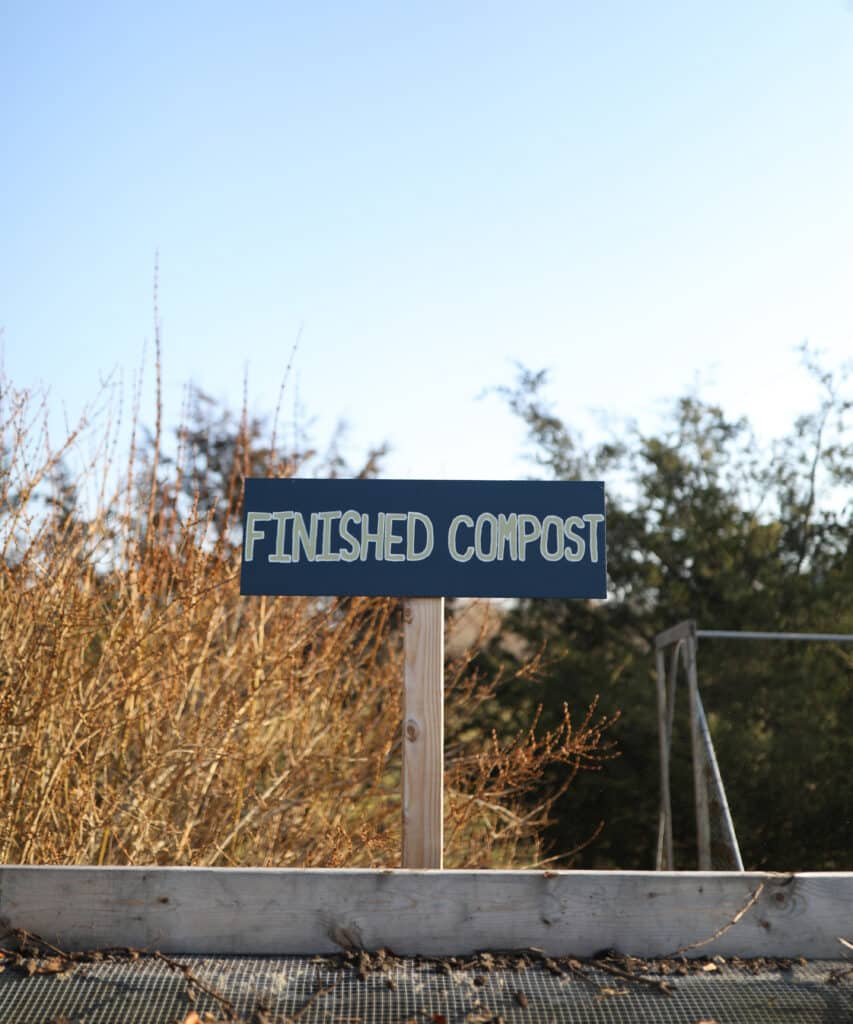Lots of people will hear about something called a Poop Loop and think, “What a crappy name!” Behind the silly term is an idea that’s crucial to permaculture: the concept of cycles of regeneration, of taking unwanted material and using it to produce new life. Here at Ocean Hour Farm, we’ve put the poop loop into practice, illustrating how we can utilize waste to lower our reliance on outside resources and therefore reduce our footprint.
Coined by Brock Dolman of Occidental Arts and Ecology Center, the poop loop refers to the cycle of using waste to grow food. The manure produced by animals on a farm is taken, distributed to garden areas or let compost in place, and put to use as a natural soil amendment. By turning a waste stream into a production stream, resources such as nitrogen and other nutrients in animal manure can be returned to the soil instead of being sent to a landfill or clogging septic systems. This concept can be applied to human systems, most commonly with pee cycling or utilizing waste from composting toilets.
Out with Pine Shavings, in with Deep Litter
Our hennery is a low building with a cedar roof that is deeply integrated into its surroundings. It has six indoor and outdoor chicken pens, which allow the birds access to fresh air and sunshine, as well as a lot of dirt to scratch. When a visitor takes a closer look at the ground under the chickens’ feet, they can see the foundations of the poop loop. Rather than using pine shavings as bedding, these chickens live on a bed of waste stream woodchips. The woodchips are broken down with the regular addition of nitrogen through the chickens’ poop, and their constant scratching in the bedding helps turn and aerate it.
In deep litter systems like this, wood chips are added to the hennery but not removed until they’ve been fully broken down. In the absence of regular stall cleanings, the bedding can break down into rich compost, which in turn is applied to the soil in the gardens and used to feed the trees in the silvopasture, where eventually the chickens will forage and roam. The hens’ feed is supplemented with regular scraps from the garden, and the cycle of the poop loop carries on.
Just like any other form of composting, deep litter systems help divert waste from landfills. The compost created from deep litter sequesters carbon and nitrogen in the soil, allowing them to be used by plant roots as they grow and keeping these elements out of ocean-impacting runoff. The poop loop reduces the need for off-farm inputs such as soil amendments and animal feed. It also lowers the amount of waste that must be removed from the farm, which in turn lowers the amount of pollution that makes its way to the ocean. When the poop loop is complete, the cycle of growth and decomposition can serve our farm, our community, and our world.






